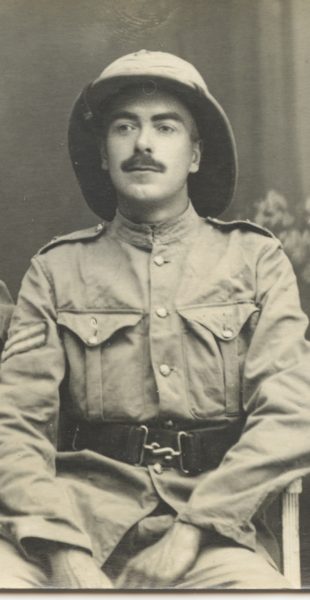 The Background
The Background
One evening in the spring of 1919 a soldier in his uniform appeared at the front door of 115, Strathyre Avenue, Norbury, London.
Frances Sims knew who it was immediately. It was her husband – Lance Corporal Frank Herbert Sims, known as Bert. The only problem was that Lance Corporal Sims had died at Taranto, Italy in January.
That was the family story at least. And whether that started the long search to make contact with the dead I don’t know.
Certainly spiritualism had been a thriving and growing practice throughout much of the previous century. The huge losses of the war gave it a renewed boost as the millions of bereaved sought reassurance and relief from their grief
When the War Office telegram arrived that winter LCpl Sims was expected home on leave. His long underwear was warming on the rack above the kitchen range. The war was over. Soon he would be coming home to his wife and two little girls for good
As the news of his death registered, Frances Sims ran upstairs and threw herself on the bed sobbing and inconsolable with grief. When her older daughter – five year old Edith – tried to comfort her, she pushed her away.
It was a moment that the child never forgot. She carried that sense of loss and rejection with her for the rest of her life. There was always a space where her father should have been, always a sense of loss and longing for what had been taken from her. A sense of what could have been and a deep enduring emotional absence that never went away.
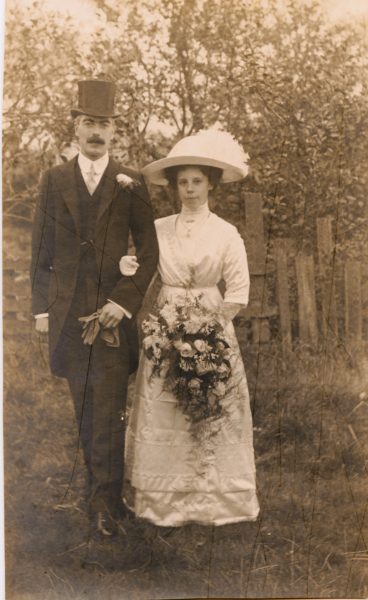 I don’t know how and when Frances and Bert met but they were married in April 1911. His father was a London policeman and his parents were strict evangelical chapel-goers.
I don’t know how and when Frances and Bert met but they were married in April 1911. His father was a London policeman and his parents were strict evangelical chapel-goers.
In 1911 he was an accounts clerk living in the house of an omnibus driver and paying 6 shillings a week for a furnished room in Stanley Terrace, Eccelston Square, Pimlico.
Frances was the oldest of seven, a farmer’s daughter from Brampton, Chesterfield. Two more children had died in infancy, one of them in her five year old arms. She had won a pupil teacher scholarship at the age of seventeen and had trained at Stockwell College in south London. In 1911 she was teaching in a what was known as a slum school in Leeds.
Here they are dressed up on their wedding day. How impossibly grand, old fashioned and Edwardian they look.
Amazing to think that this is the same person I sat with in her efficiency in Santa Barbara to watch a program about the Space Shuttle. She was born into an age of mechanical marvels and lived to be two months short of a century. She was in awe of the changes she had lived through and relished the excitement of space travel and new technologies. She was short, strong-willed, determined, a resilient risk-taker and a shrewd down-to-earth businesswoman with a tremendous gift for friendship. She never forgot my birthday.
I have in my hand a real genuine spirit photograph from the 1920’s. By genuine of course I mean a real fake genuine photo as there have never been any actual authenticated photographs of spirits anywhere ever. All of them have been debunked as frauds and exposed as trickery.
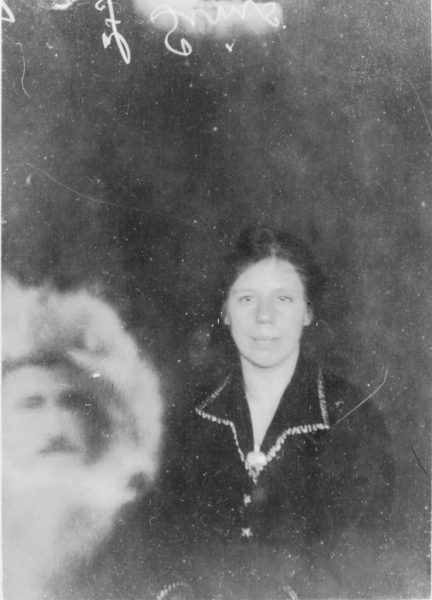
It’s my grandmother.
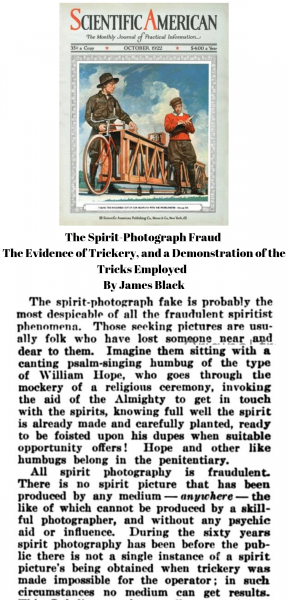
Note the reversed image spirit image name at the top – common with such items: F. Sims. The frothy white stuff was claimed to be ectoplasm – spiritual energy made manifest by the mediumship of the photographer.
The “spirit” face has been superimposed amid the puffy cloud which conveniently allowed for the photo edges to be blurred and disguised. Those faces were known as “extras”.
I don’t know who the photographer was but there were many working in this lucrative field in the years after WW1. So many desperate and grieving people in search of some sign, in hope of some indication that the one they loved was still there in the spirit world.
Spirit photos were big in the hey day of spiritualism which of course happened to coincide with the development of photography.
As “evidence”, as “proof” of the afterlife it was natural for hoaxers and frauds. It was a much easier and more convincing – to the gullible – than all the business of table levitation and rapping.
Easy as they were to create so were they as easy to debunk by those who understood the tricks of double exposure and other early examples of image manipulation.
One hoaxer – Ada Emma Deane – made a practice of taking photos of the annual armistice ceremonies at the Cenotaph in London where crowds gathered every November 11th to mark the end of the war and remember the dead. This one is from 1922.
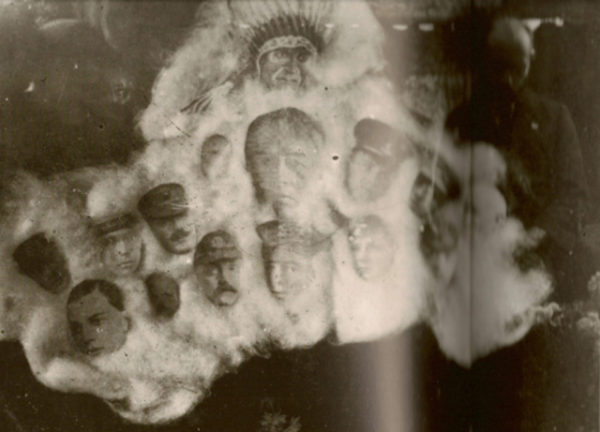
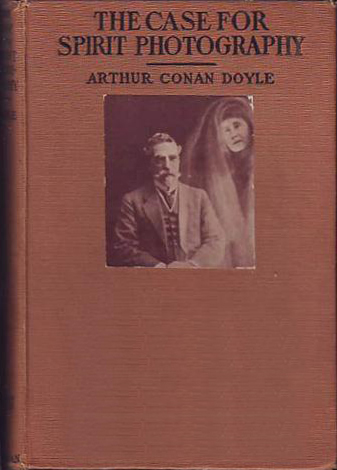 Deane was fifty-eight years old when she began her career as a photographic medium. Her Centotaph photos brought her considerable notoriety and widespread coverage in the press.
Deane was fifty-eight years old when she began her career as a photographic medium. Her Centotaph photos brought her considerable notoriety and widespread coverage in the press.
Her 1924 effort was the front page of the Daily Sketch on November 13th. It showed a number of blurry faces floating in a fuzzy cloud above the Cenotaph in Whitehall as crowds stood for the moment of silence.
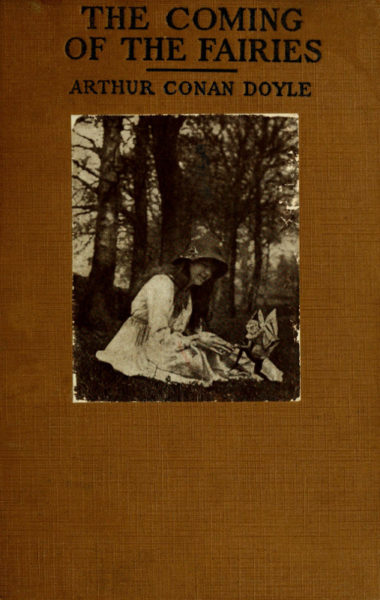
Deane’s reputation took a hit but – although she took no more Armistice photos – she continued her private spirit photo business into the 1930’s. The Met Museum in NYC has a collection of them.
True believers like Sir Arthur Conan Doyle were undeterred.
Before her second career as a medium Deane had been a charwoman and this in Conan Doyle’s opinion was supportive evidence that she could not possibly know of such things as ectoplasm and be clever enough to commit such an elaborate fraud.
Conan Doyle was easily deceived and he stoutly defended the indefensible long after hoaxes and frauds were exposed.
The Crewe Circle and the spirit photos of William Hope were other hoaxes exposed as fraudulent that he defended in spite of the evidence of manipulation and deception. He wrote a full account in The Case for Spirit Photography.
The case of the Cottingley Fairies was another example of Doyle’s ready suspension of rational thought. And again he put pen to paper to defend against the skeptics.
The photographs had been taken by two young girls, the cousins Frances Griffith and Elsie Wright, while playing in the garden of Elsie’s home in the village of Cottingley, near Bradford, Yorkshire.
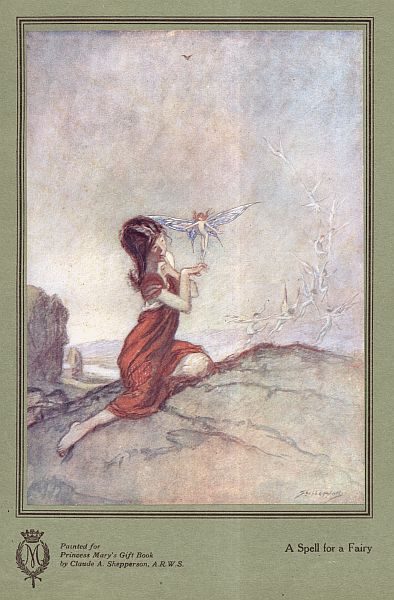
Photography experts examined the pictures and declared them free of fraudulent manipulation.
Some spiritualists proclaimed them as conclusive proof of the existence of supernatural fairy spirits.
It wasn’t until the 1970’s when the photographs were definitely debunked. The women admitted they had used cardboard cut-outs and hatpins to set up the fairies for the photographs.
The fairies also bore a remarkable resemblance to drawings illustrating an Alfred Noyes poem in Princess Mary’s Gift Book (1914) – which was produced to raise money for charity.
Ironically that book included a story by Conan Doyle himself – Bimbashi Joyce – a rather nasty little colonial story about the British Army in the Libyan desert. He must not have looked through the whole thing. If he had it might have been hard even for him not to see the likeness between the fairies and Claude A. Shepperson’s illustrations.

Here’s another of the illustrations:
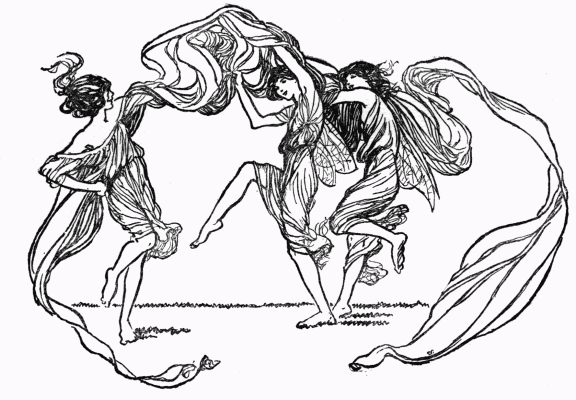
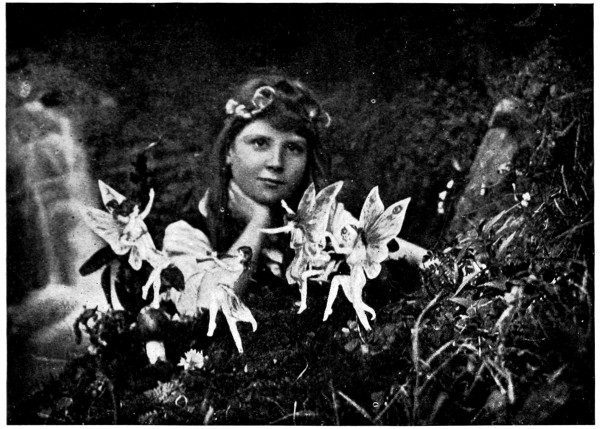
Doyle lectured to audiences all over the world on a range of psychic and spiritualist topics and of course he spoke in London and Croydon. My mother attended one of his lectures in the late 1920’s but I don’t know which one.
My mother believed in fairies although she never saw one. As a sound barrier between the back garden and a busy road that was bordered by a hedgerow she planted a row of cypresses. This created a shady pathway with wild flowers and nettles on one side. This she called her fairy walk.
She felt she lacked the psychic gift to see the fairies or make direct contact with the spirits. She knew that there were frauds and charlatans in the world and that probably her mother had fallen victim to one in the case of the spirit photo. But it never stopped her from always looking at every photo, just in case.
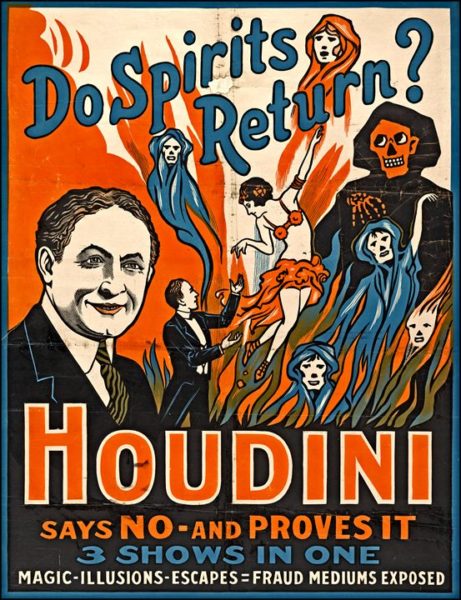
The reason for this extended foray is to create the social context of the 1920’s.
It was a time when spiritualism in all kinds of forms was prevalent and amongst all classes. It was fashionable to hold seances and spiritualism as an organized alternative to traditional Christianity – that had taken off in the late19th century – continued to thrive. Stories of the supernatural and of people who had received spirit messages and “proofs” of life after death were everywhere.
Also active were those who sought to expose fraudulent practices. Among the debunkers were the professional magicians who know a thing or two about illusions and the practice of deception. Famous among them was Harry Houdini who made it a personal mission to expose spirit photography and mediums. Nevertheless, he and Conan Doyle became friends.
Frauds, tricksters, scammers and con artists and all the mumbo jumbo paraphernalia of table rocking and physical manifestations as in speaking trumpets, automatic writing ghosts, apparitions and extras aside, there is nothing more intrinsically weird about spiritualism as a religion than mainstream belief systems – Anglicans, Methodists or Mormons for example.
Spiritualist dogma – such as it is – is usually based on traditional forms but is more appealing and attractive because of its lack of focus on sin, judgment and punishment. Spiritualist doctrinal beliefs offer hope and growth rather than shame and condemnation.
In the 1920s my mother and her sister attended a Lyceum – the Spiritualist version of Sunday School. It’s interesting to read the manual of activities and think of how they probably contributed to her developing notions about teaching and also as providing a foundation of what decades later become a whole eclectic cosmology.
The Lyceum movement was started in America in1861 by a man known as the “Poughkeepsie seer” at Dodworth’s Hall, next to Grace Church on Broadway and 11th Street in NYC.
Andrew Jackson Davis was given his first names by a drunken neighbor of his parents. Given the prominent role of Native Americans in the spiritualist movement there is something ironic that he should have been given the name of the president who is perhaps best remembered for his cruelty to Native Americans.
The Lyceum program in America and as adapted in the UK aimed at the intellectual, moral, and spiritual development of children along the lines of Andrew Jackson Davis ‘s vision of children in the afterlife of the spirit world that he called Summerland
Have no hard tasks for the children, no learning of difficult questions, aim at making the children happy, so that their Sunday may be to them the pleasantest day of the week. – from The Lyceum Manual
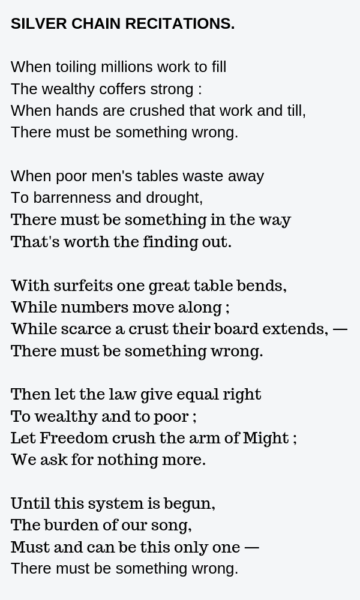
Conan Doyle was not the only prominent man to announce his belief in spiritualism. There were others including the socialist journalist Hannan Swaffer and the noted physicist Sir Oliver Lodge. Like Doyle, Lodge had become interested in the practice in the late 19th century and both lost sons during the war. They gave lectures and platform demonstrations and their work and thinking became part of the fabric of my mother’s belief system.
Lodge was involved in the development of, and holder of key patents for, radio and he independently identified electromagnetic radio waves.
He was also a Christian spiritualist who had in 1909 published his belief that life after death had been demonstrated by mediumship. I mention his name because he was one my mother often spouted when trying to convince her physicist son of one of the absurder aspects of spiritualism.
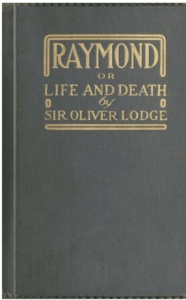 Lodge’s most controversial book was Raymond or Life and Death(1916) and it makes for interesting reading. His sons letters from Flanders are full of lively details about life at the front. I especially enjoyed his vignettes about food and the contents of parcels from home.
Lodge’s most controversial book was Raymond or Life and Death(1916) and it makes for interesting reading. His sons letters from Flanders are full of lively details about life at the front. I especially enjoyed his vignettes about food and the contents of parcels from home.
After Raymond is killed by shellfire at Hooge in September 1915 it documents the séances that Lodge his wife and other family members had attended with various mediums including Gladys Osborne Leonard who spoke through her control – an Indian woman named Feda. In 1918 Leonard began working with the Society for Psychical Research and later with Radclyffe Hall. The results of those sessions were published in the Proceedings for the Society for Psychical Research in 1919

Lodge was convinced that his son Raymond had communicated with him and the book is a description of his son’s experiences in the spirit world including many details of spirit world and especially of the important spirit work. Being dead on the earthly plane did not mean eternal rest.
Lodge believed that Leonard’s spirit control “Feda” had communicated with his son. However, he admitted a good deal of the information was nonsense.
Scientific work on electromagnetic radiation convinced Lodge that an ether existed and that it filled the entire universe. Lodge came to believe that the spirit world existed in the ether.
Most interesting to me amongst all the nonsense in Raymond is the “spirit”‘s concern for the grieving of his family. He urges them not to be sad and that at the upcoming Christmas dinner he will be there. They set a place for him and refrain from mourning in the belief that Raymond is happy in the spirit world and upset when they are sad about his death.
“Mother darling, I am so happy, and so much more so because you are.”
Yes, we are; and as your father says, we can face Christmas now.
Raymond says he will be there.
We will put a chair for him.
Yes, he will come and sit in it.
He wants to strike a bargain with you. he says, “If I come there, there must be no sadness. I don’t want to be a ghost at the feast. There mustn’t be one sigh. Please, darling, keep them in order, rally them up. Don’t let them. If they do, I shall have the hump.” say.)
We will all drink his health and happiness. – from Raymond, p.117
This denial of grief and the insistence on being bright, active and cheerful reappears in Part Two of this saga when we fast forward to the 1960s.
And if we marvel at the credulity of those back then then we must also wonder at the credulity of our own times. Fake news and photoshop included.
And on that note here is an ad that appeared in the same issue of Scientific American that debunked the spirit photo fraud. It would have been hard not to believe in the magic of science and unseen marvels in 1922.
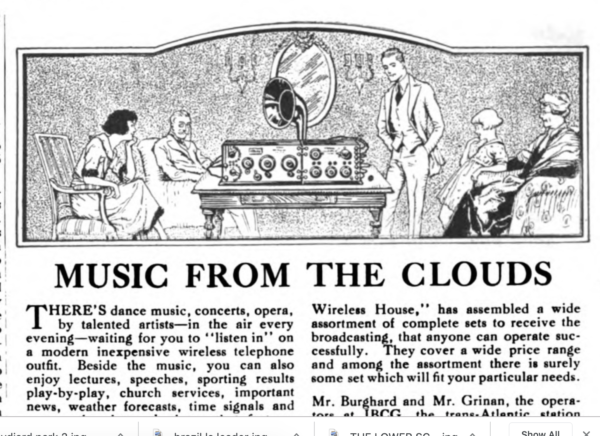



Truly fascinating! I think I have a teeny tiny bit of residual fairy belief from my grandmother but so far no sightings…
“There are more things in heaven and earth, Horatio,
Than are dreamt of in your philosophy. ”
– Hamlet (1.5.167-8), Hamlet to Horatio
While I agree with Hamlet – (and think the word ‘our’ is better than ‘your’ in the context of the play) – I don’t think I’ve ever believed in or wanted to believe in fairies. I always though most fairy stories were rather repulsive.
Thanks for the comment though!
Somewhere I have a picture of the police barracks he lived in…will try to find..and details of his police record…all probably on line. The family, as you know, all lived in the vicinity of the Palace and Wellington barracks and my father’s family and his sisters in Ebury Mews. Much of this info I stored in Ancestry or Find my past and not sure now how to access…but will try.
A strange friendship indeed.
Quoting from the Introduction to the book I mentioned in my previous comment: “We poured over the thousands of documents and discovered the most amazing story of what really happened when Houdini took on the fraudulent Spiritualists. As a by-product, we learned a great deal about Sir Arthur Conan Doyle.”
If interested, you can probably still find the book online. The authors are Wm. Kalush and Larry Sloman.
Thanks for the lead. I’ve just been able to access a good chunk of the book online. Fascinating. The more Houdini exposed the trickery the more Doyle was convinced that the magician had psychic powers. Classic conundrum.
The whole blog is a fascinating read for me. The things that stand out for me are the always be cheerful mantra…your mother personified this in her singing and her encouragement or if not forthcoming her directions. Her traumas in childhood seem immense and yet she managed to persevere…or maybe that is what drove her to…rather like her mother it seems. I hadn’t ever realised that her father died after the war had ceased and he was expected home. That, and her mothers pushing her away which stayed with her as a memory I had not heard, must have been exceedingly hard to bear. During the latter 19thC life was hard for many and religion wasn’t always enough. It seems that spiritualism is the coping mechanism. Chris is the spitting image of your grandfather! Lastly it seems our grandparents had some things in common…policeman father and living in Pimlico in 1911. Coincidence…surely???!!
His beat was Chelsea and he lived in Wellington Buildings
Ebury Bridge Rd before retiring in 1907 and moving to Guildford. Family were members of the Wesleyan Methodists. Yes – interesting coincidence. Any overlaps? And thanks for all the comments.
Thank you for this very interesting post, most of which I didn’t know (other than about Houdini and Arthur Conan Doyle, courtesy of a 2006 book titled THE SECRET LIFE OF HOUDINI containing many details about their relationship).
They seem to have had a strange friendship. Houdini was deeply skeptical of what Doyle so easily believed. He made a routine habit of exposing frauds. But mostly I think it was because he wanted it all to be true and was deeply disappointed when he found that so much certainly was not. Many of the true believers also knew that the business attracted confidence tricksters and scammers. It’s why – i think – that so many people make a point of pointing out that the practitioners don’t get rich from their work. (Not making money of course does not make it real but it does avoid the charge of religious exploitation. Very unlike and the sick spectacle of mega-church merchants and their profiteering religiosity.)
-Hello Josie,
“…..many people make a point of pointing out that the practitioners don’t get rich from their work” -reminded me of the chapter in ‘Freakonomics’ entitled “Why do many drug dealers still live with their mothers?”. It seems to me that the reward sought by mediums is the sense of power and influence over others.
Yes. Indeed.